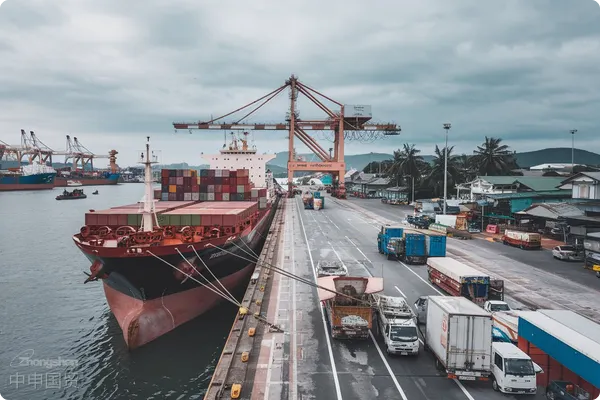- Shanghai Zhongshen International Trade Co., Ltd. - Two decades of trade agency expertise.
- Service Hotline: 139 1787 2118

Contents
ToggleSemiconductorEquipment Importss Three Special Characteristics
The global semiconductor equipment market size is projected to exceed $120 billion by 2025, with China's import share steadily rising to 35%. Unlike ordinary electromechanical products, semiconductor equipment imports exhibit distinctive characteristics:
- Precision instrument attributes: The transportation of equipment such as lithography machines requires continuous temperature and humidity monitoring throughout the entire process, with a tolerance range of ±0.5℃.
- Special transportation requirements for special parts of new energy vehicles (such as battery modules): It involves ECCN code control, and the ML (Military List) declaration document needs to be prepared simultaneously.
- Delivery cycle sensitive: The daily shutdown cost of wafer fabs can reach up to $3 million, and customs clearance delays will trigger a chain of losses.
Evaluation of the Five Core Competencies of Agency Service Providers
Dimension 1: Technical Parameter Compliance Capability
The latest U.S. BIS export control regulations (2025 revised edition) require a response time of ≤72 hours for equipment technical documentation review. High-quality agency companies should possess:
- Specialized HS Code Database for Semiconductors (covering 20+ subcategories including 8541/8486)
- A real-time updated technical control list comparison system
- Case: A 12-inch wafer fab imported an etching machine, and the agency completed the ECCN 3B001.a declaration within 3 days.
Dimension 2: Customs Clearance Efficiency Guarantee System
Comparing the customs data of 2025, professional agency companies can achieve:
- Pre-classification accuracy rate ≥98% (industry average only 82%).
- The inspection rate at ports has decreased to 5.7% (21.3% for non-professional agents).
- The customs clearance period for Japanese equipment has been reduced to 48 hours (standard process requires 5 working days).
Dimension Three: Tariff Optimization Scheme Design
By combining the utilization of FTA rules of origin and processing trade manuals:
- The comprehensive tax rate for imported equipment from South Korea can be reduced from 8.2% to 4.5%.
- The import of bonded maintenance equipment can save 17% in value-added tax.
- Case: A packaging and testing enterprise released 30 million in working capital through a tax deferral plan.
Dimension 4: Supply Chain Risk Management
The transportation of semiconductor equipment requires dual safeguards:
- Transportation insurance covers 600% of the cargo value (standard policy only covers 110%).
- Equipped with Class 100 cleanroom standard bonded warehouse
- Emergency customs clearance plan response time ≤2 hours
Dimension Five: Depth of Industry Resource Integration
The resource network of a top-tier agency should encompass:
- Establish a VMI inventory collaboration mechanism with manufacturers such as ASML/Applied Materials.
- Access the SEMI (Semiconductor Equipment and Materials International) equipment certification database
- Covering 12 customs special supervision zones in the Yangtze River Delta and Pearl River Delta regions.
Cost calculation of selection errors
A certain memory chip company in Q1 2025 suffered from:
- Additional charges of $82,000 incurred due to equipment detention at the port.
- The project's delayed commissioning by 17 days resulted in a loss of $5.1 million.
- The subsequent three batches of imports have been included in the key inspection list.
The value of professional semiconductor equipment agency lies not only in handling individual transactions, but also in assisting enterprises in buildingCompliance MoatandSupply chain resilienceIt is recommended to adopt a five-dimensional evaluation model, prioritizing agency service providers with wafer fab service cases, holding AEO Advanced Certification, and equipped with semiconductor technical teams.
Related Recommendations
? 2025. All Rights Reserved. Shanghai ICP No. 2023007705-2  PSB Record: Shanghai No.31011502009912
PSB Record: Shanghai No.31011502009912










